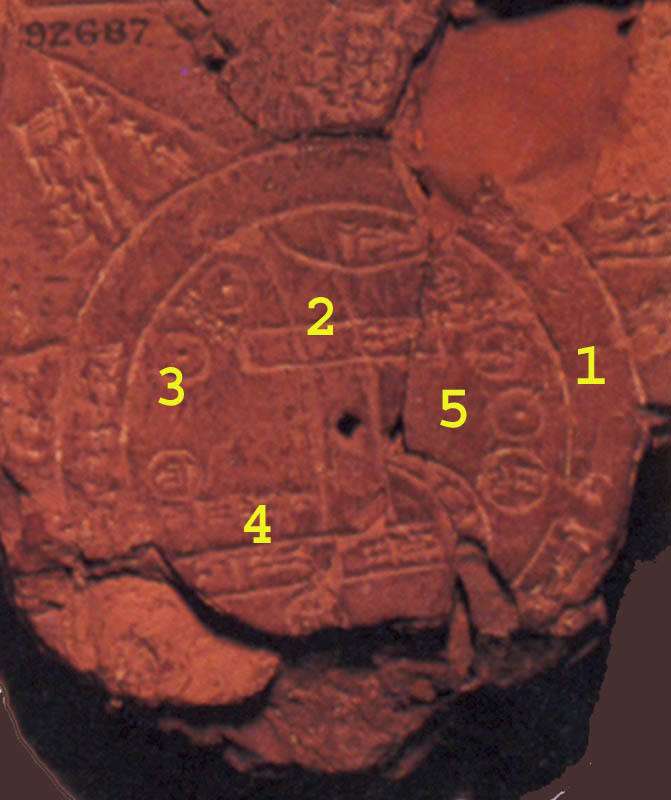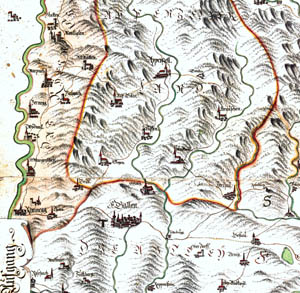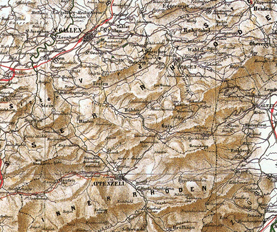|
|
Maps and Cartography
Purpose of a Map
A map presentation largely depends on the intended use. The primary objective of maps is to store geographic information in a spatial, usually two-dimensional format. Another reason to design maps might be analytical purposes involving measuring and computing. Further purposes are used to summarise voluminous statistical data, and thereby, assist in spatial forecasting and spotting trends. Sometimes maps are simply used to visualise abstract phenomena which, would be invisible otherwise.
What is a Map?
The ![]() map is a graphic representation of all aspects of the cultural and physical environment. This definition includes mental abstractions
that are not physically present on the geographical landscape (it is possible, for example, to map people’s attitudes).
map is a graphic representation of all aspects of the cultural and physical environment. This definition includes mental abstractions
that are not physically present on the geographical landscape (it is possible, for example, to map people’s attitudes).
The official definition of map is: A map
is a symbolised image of geographical reality, representing selected features or
characteristics, resulting from the creative effort of its author's execution of
choices, and is designed for use when spatial relationships are of primary
relevance.
(International Cartographic Association 1996, p. 1)
What is Cartography?
The ![]() Cartography is the art, science, and technology of making maps, together with their study as scientific documents and works of art. In
this context, we may regard all types of maps including all plans, charts, and sections, three-dimensional models and globes
representing the earth or any celestial body at any scale (International Cartographic Association 1973).
Cartography is the art, science, and technology of making maps, together with their study as scientific documents and works of art. In
this context, we may regard all types of maps including all plans, charts, and sections, three-dimensional models and globes
representing the earth or any celestial body at any scale (International Cartographic Association 1973).
History of Map Use
World’s Oldest Map
The world’s oldest map is depicted on a clay tablet from around 700 BC, which was found near Nuzi in Iraq, in Babylonian times. This map has just a size of 10x10 cm and is drawn by imagination, without any measurements, to describe a realm or the border of the known-world.
 The world's oldest map (Chrisp 1997) The world's oldest map (Chrisp 1997) |
The World’s oldest map: Nuzi (Iraq), 3800 BC, shows the northern part of Mesopotamia with the Euphrates, the Zagros mountains in the East and the Lebanon mountains in the West. (Chrisp 1997)
|
Navigational Maps
In Europe, compass bearings were unknown until 1300 A.C, but the position of the sun also served as a beacon for orientation.
Accordingly, the beginning of surveying and navigation also represented the beginning of the history of cartography. About
200 A.C., Ptolemeus, an astronomer and geographer of Alexandria, calculated latitude and longitude of 8000 ground points.
Based on his works, Arabics’ carried out important further cartographic work.
However, it was the general use of the compass in the XIIIth century that allowed to establish comprehensive navigational
charts: the portolans. They allowed the navigators to be guided on sea and to measure distances. On land, however, maps still
remained simplistic.
 South Atlantic Portuguese chart (Reinel 1519) South Atlantic Portuguese chart (Reinel 1519) |
Portolans were drawn on parchment by navigators. They allowed them to be guided along coastlines and across the sea and to measure distances. |
At the end of the XVth century and at the beginning of the XVIth century, the travels of Colombus, Vasco de Gama, Balboa, Magellan, and El Cano considerably widened the knowledge of earth's geography. In the XVI century, cartographers had collected enough information to represent the continents. Thus, after the sea charts began the mapping of continents.
The Evolution of Maps
The following series of examples shows the
evolution of maps of the Appenzell countryside in Switzerland from the time of Gyger
(1620) to recent days:
 Gyger map 1620 (Rusch 1999) Gyger map 1620 (Rusch 1999) |
Extract of Gyger's maps from 1620. The average scale of the pen drawing with watercolour additions is 1:12000 with a tolerance up to 20%. What is special about this example is its orientation: towards south (Rusch 1999). |
 Schwaben map 1811 (Rusch 1999) Schwaben map 1811 (Rusch 1999) |
Extract of Amann's Schwaben map from 1811. The copper engraving shows hachures whose thickness and spacing indicate the degree of slope. The original mapscale is 1:86 400 (Rusch 1999). |
 General map 1890 (Rusch 1999) General map 1890 (Rusch 1999) |
Extract of Cantons' Appenzell general map from 1890 published by Wurste, Randegger and Co. It is made by the method of chromolithography where the image ink accepting and the non-printing ink rejecting areas lie in the same plane (Rusch 1999). |
 Swiss national map 1:50'000, 2000, reproduced with the permission of swisstopo (BA057224) (Bundesamt für Landestopographie 2000) Swiss national map 1:50'000, 2000, reproduced with the permission of swisstopo (BA057224) (Bundesamt für Landestopographie 2000) |
Extract of the Swiss National map 1:50 000, published by the Federal Office of Topography in 2000. Map making is nowadays done digitally using graphics computer technology. The map was originally scribed on coated glass plates but later scanned and updated digitally. |
Current Use of Maps
As our society has become more complex, the need and use of all kinds of maps have increased. Local governments and planning agencies use them for plotting environmental and resource data. Professionals in the fields of soils, geology, and water resources use them for their daily work and planning. Public utility and engineering companies consult technical maps in order to complete their tasks. Land use maps are utilised by planners, detailed cadastral maps are indispensable for city tax recorders. Astronauts even used maps to land on the moon. The list of uses and users is virtually endless (Dent 1996).
